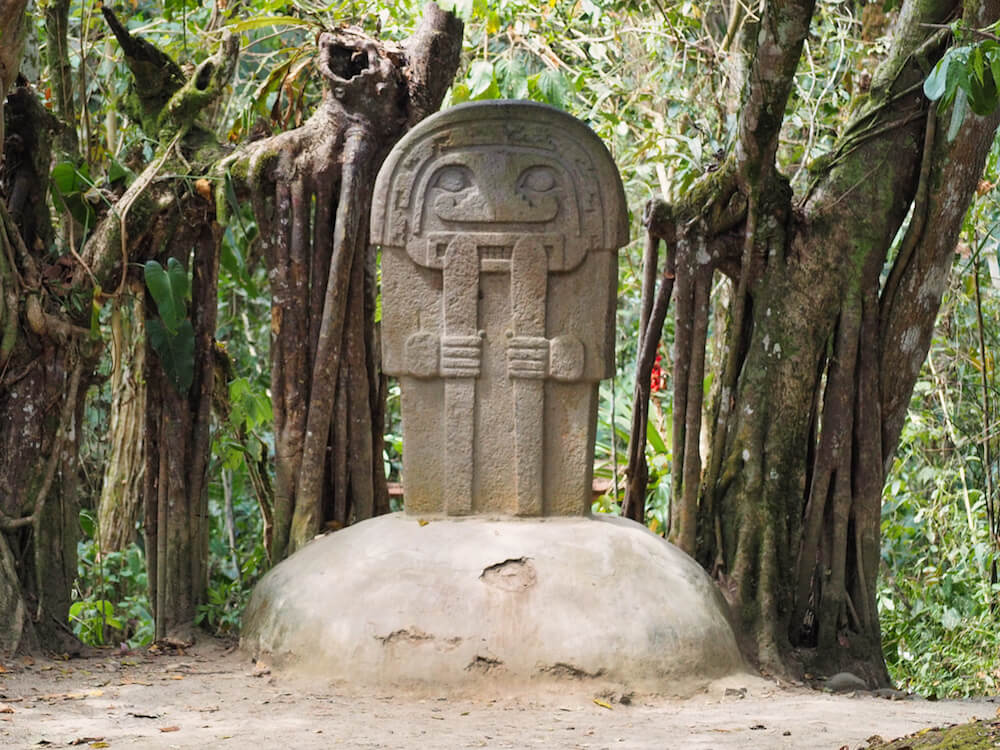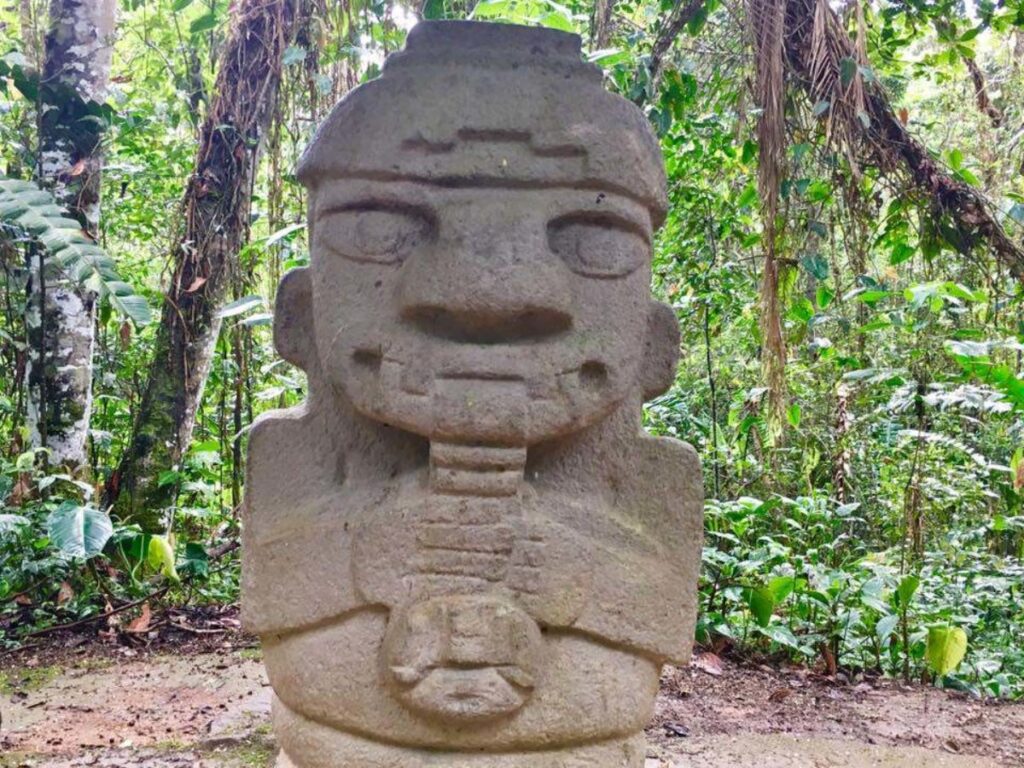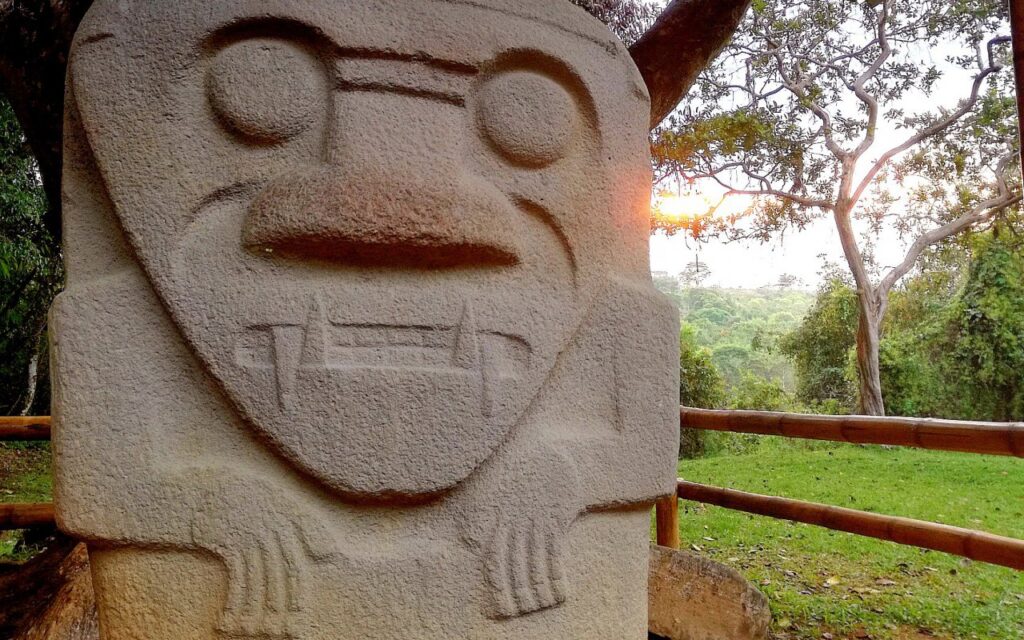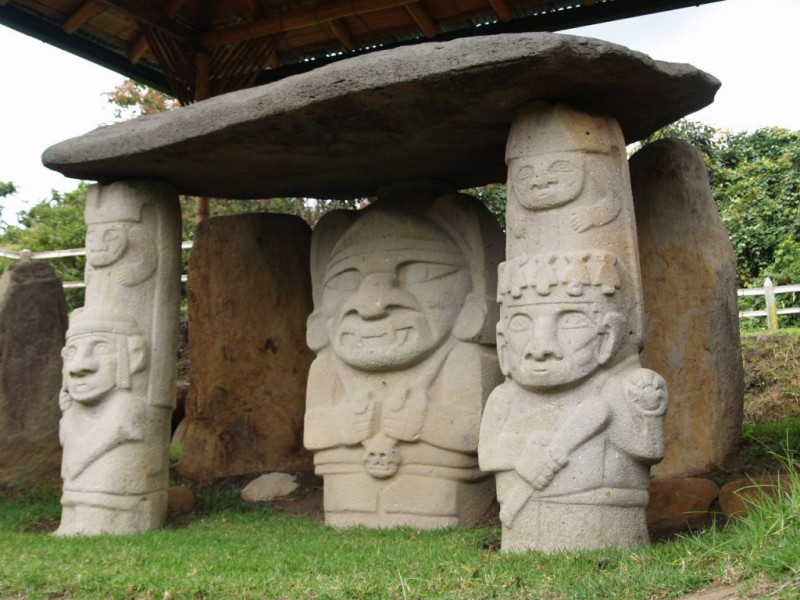MEGALITHIC MARVELS AT SAN AGUSTIN

Deep in the lush jungles of southern Mexico, near the border with Guatemala, lies the enchanting archaeological site of San Agustín. Known for its stunning megalithic statues, San Agustín offers a unique glimpse into the ancient cultures of Mesoamerica, particularly the traditions of the Olmec and subsequent civilizations.
A Forgotten Civilization
The San Agustìn area was likely inhabited by the Olmecs, followed by other cultures, including the Mixtecs and Zapotecs. Although much about the site remains a mystery, it is thought that San Agustín was a significant ceremonial center, where the megalithic statues played an essential role in religious and social activities.
Rediscovery
The site remained largely forgotten until its rediscovery in the early 19th century. Explorers and archaeologists were captivated by the enigmatic statues, which depict a variety of figures, including human heads, animals, and mythical beings. The monumental scale and intricate designs sparked considerable interest, leading to further investigations that revealed the site’s historical importance.
The Megalithic Statues

The megalithic statues of San Agustín are characterized by their impressive size and elaborate carvings. Many of these statues are made from hard volcanic rock, showcasing the artistry and skill of the ancient sculptors. The figures often feature exaggerated facial features, intricate headdresses, and symbolic motifs, reflecting the cultural and spiritual beliefs of the Olmecs and their other creations, such as the famous colossal heads.
One of the most iconic statues, known as the “Altar 1,” depicts a seated figure with a headdress and a ceremonial knife. This statue, along with others in the site, is believed to represent important deities or ancestral figures, underscoring the significance of the spiritual world in the lives of the ancient inhabitants.
Symbolism and Interpretation

The symbolism embedded in the statues is a topic of ongoing research and debate. Some scholars suggest that the figures may represent rulers or spiritual leaders, while others believe they embody important mythical creatures or gods. The positioning of the statues within the landscape—often near water sources or atop hills—further emphasizes their spiritual significance, connecting them to the natural world and the cosmos.
The Dolmens

One of the most intriguing features of San Agustìn is the dense presence of megalithic dolmens. Identical to those that can be found all over the world, with examples throughout Europe, Russia, Japan and India, the dolmens at Sa Agustìn are often “inhabited” by the megalithic statues, which are placed under these structures.
Cultural Significance
The megalithic statues of San Agustín serve as a testament to the rich cultural tapestry of Mesoamerica. They reflect the complex belief systems, social structures, and artistic achievements of the ancient peoples who once thrived in this region. The site is also a crucial link in understanding the broader cultural exchanges that occurred across Mesoamerica, as influences from the Olmec culture can be traced throughout the region.
The megalithic statues of San Agustín are not just impressive relics of a bygone era; they are powerful symbols of the cultural and spiritual heritage of Mesoamerica.
